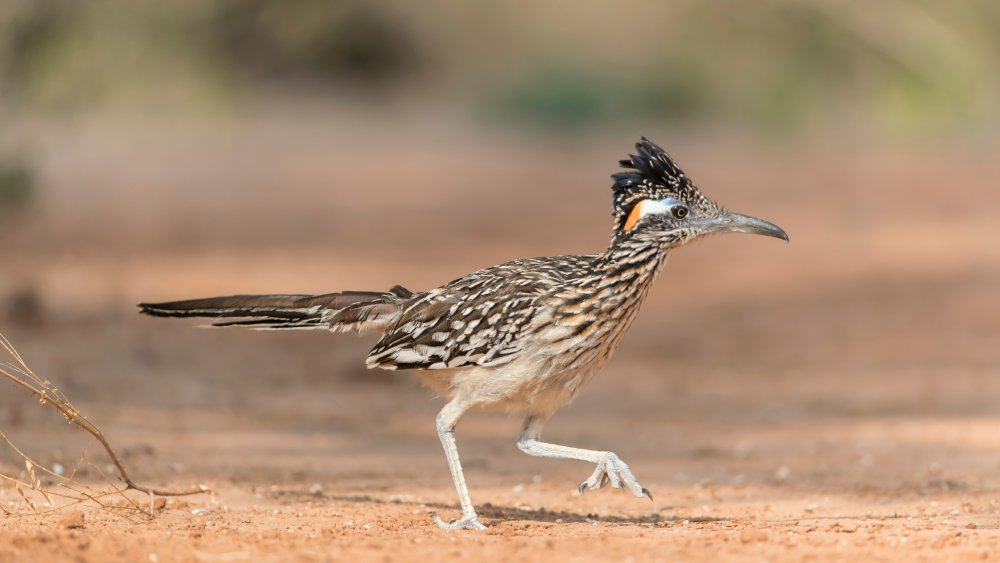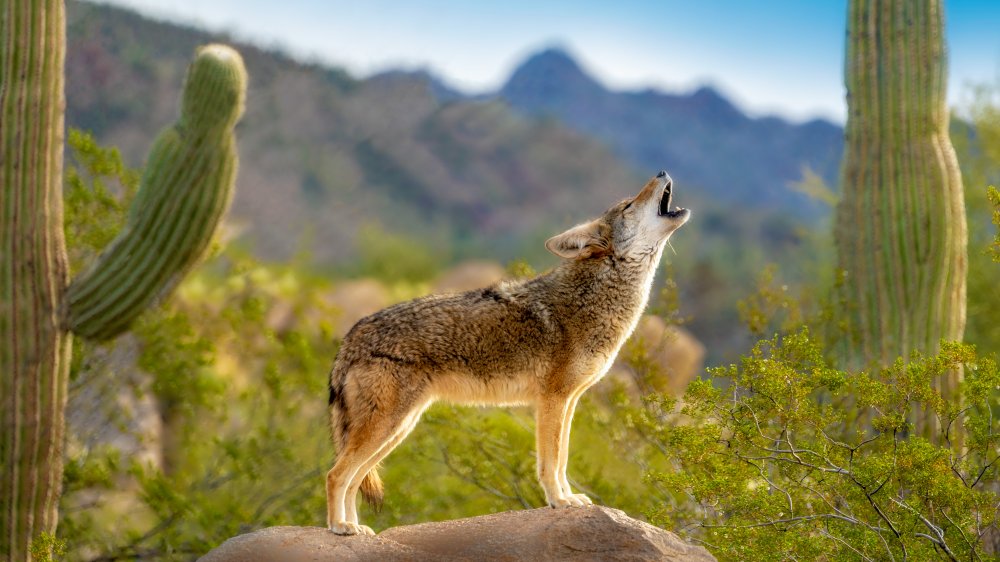The Truth About Roadrunners And Coyotes
In 1948, director Chuck Jones and writer Michael Maltese started the "longest chase in cartoon history" with the introduction of the Warner Bros. cartoon "The Fast and the Furry-ous," starring Wile E. Coyote and Road Runner. According to The Encyclopedia of Animated Cartoons, Jones had "always aspired to animate a series using 'blackouts' and sound effects in classic fashion" and was inspired by another chase cartoon, Columbia Pictures' Fox and the Crow. Wile E. Coyote caught the Road Runner just once (1980's "Soup or Sonic," per the Chuck Jones Blog). Otherwise, there are decades upon decades of the Road Runner continually outrunning the hapless Coyote, whose penchant for injuring himself via misused Acme Corporation products and clumsy plunges off unfortunately placed cliffs never stops his quest.
How realistic is this relationship, really? Could a roadrunner really outrun a coyote? Would a coyote even want to chase a roadrunner in the first place?
According to the Arizona Republic, roadrunners are actually quite fast, and can hit sprints of 15-20 miles an hour, usually while pursuing their own prey; they will "pretty much eat anything that is alive and that they can swallow." They very rarely fly, which is perhaps why Warner Bros. never showed their Road Runner just flying away from Wile E. Coyote. True, coyotes will chase and eat roadrunners, as will other predators such as raccoons and hawks. In fact, the inability of Wile E. Coyote to catch the Road Runner is scientifically inaccurate.
Could a roadrunner really outrun a coyote?
Roadrunners are fast, but coyotes are faster. The Guardian reported that in 1976, the journal Northwest Science published a study titled "Running Speeds of Crippled Coyotes," in which Bruce C. Thompson of Oregon State University shared the results of his coyote research. Thompson recorded the running speeds of three coyotes who had lost the use of one of their feet due to injuries sustained from steel traps, and compared them to a coyote with full use of all its extremities. According to Thompson, the four-footed coyote reached a top speed of just under 32 miles per hour. One three-footed coyote matched this speed almost exactly, while the other two topped out at 22.5 and 25.4 miles per hour.
Even at its best 20 miles per hour sprint, it's unlikely that a roadrunner could outrun a coyote, including one that had injured itself via steel trap (or perhaps even an Acme Corporation bomb, if we're talking about what's possible within the world of the cartoon). To top it all off, roadrunners don't even say anything like "Meep! Meep!" The Arizona Republic describes the typical roadrunner call as "a cooing call that is kind of sad sounding" and notes that when agitated, they make a clicking sound with their beaks.
That's all, folks.

